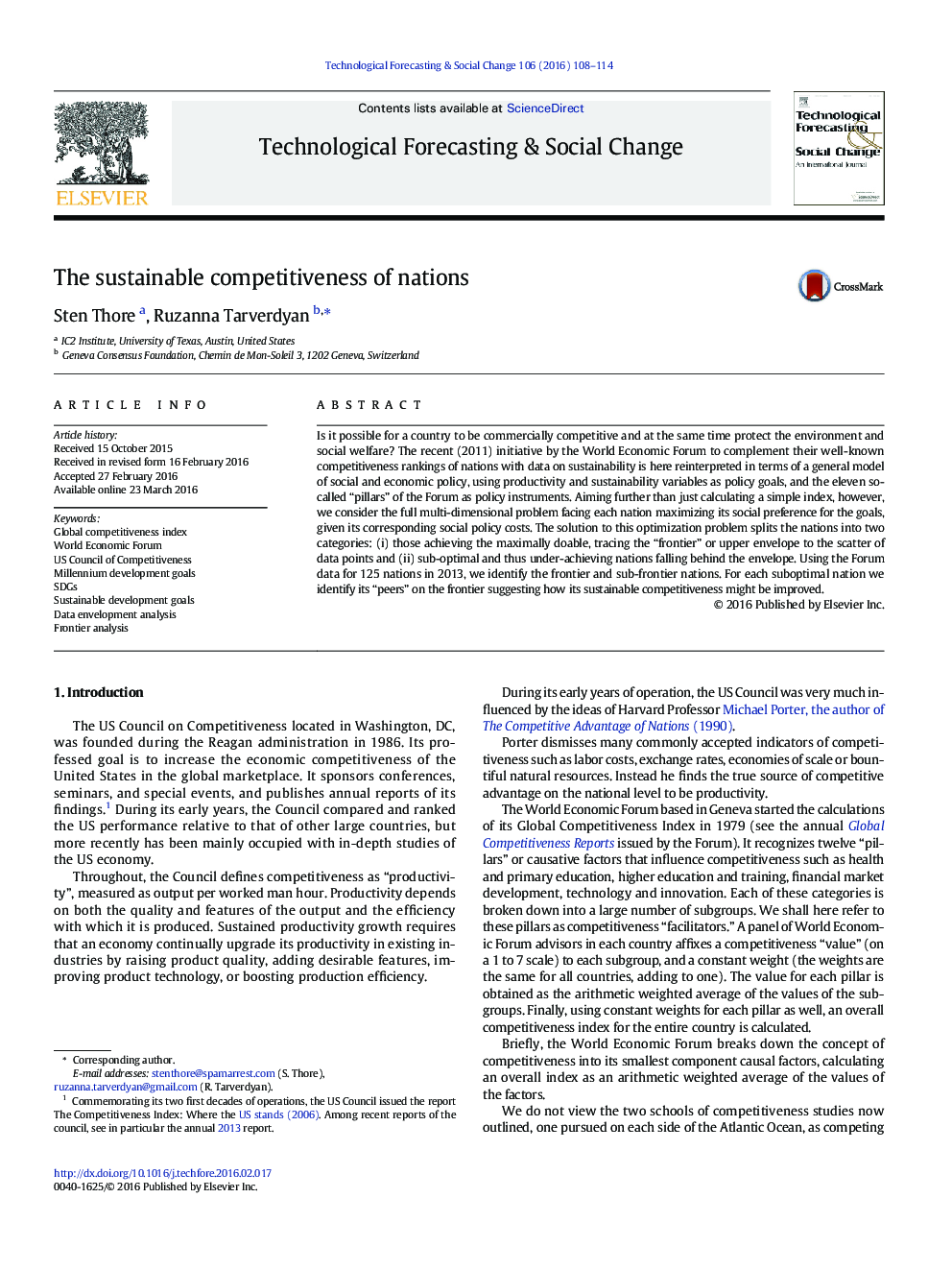| Article ID | Journal | Published Year | Pages | File Type |
|---|---|---|---|---|
| 896371 | Technological Forecasting and Social Change | 2016 | 7 Pages |
•Comparisons of advantage of frontier methods with a conventional fixed-weight index•Measurement of the success/failures of nations in reaching a set of policy goals•Recalculation of the sustainable competitiveness index of the World Economic Forum•Demonstration that envelope nations are not necessarily the masters of the world.•Projection of a sub-envelope nation onto the frontier with the potential for improvements
Is it possible for a country to be commercially competitive and at the same time protect the environment and social welfare? The recent (2011) initiative by the World Economic Forum to complement their well-known competitiveness rankings of nations with data on sustainability is here reinterpreted in terms of a general model of social and economic policy, using productivity and sustainability variables as policy goals, and the eleven so-called “pillars” of the Forum as policy instruments. Aiming further than just calculating a simple index, however, we consider the full multi-dimensional problem facing each nation maximizing its social preference for the goals, given its corresponding social policy costs. The solution to this optimization problem splits the nations into two categories: (i) those achieving the maximally doable, tracing the “frontier” or upper envelope to the scatter of data points and (ii) sub-optimal and thus under-achieving nations falling behind the envelope. Using the Forum data for 125 nations in 2013, we identify the frontier and sub-frontier nations. For each suboptimal nation we identify its “peers” on the frontier suggesting how its sustainable competitiveness might be improved.
